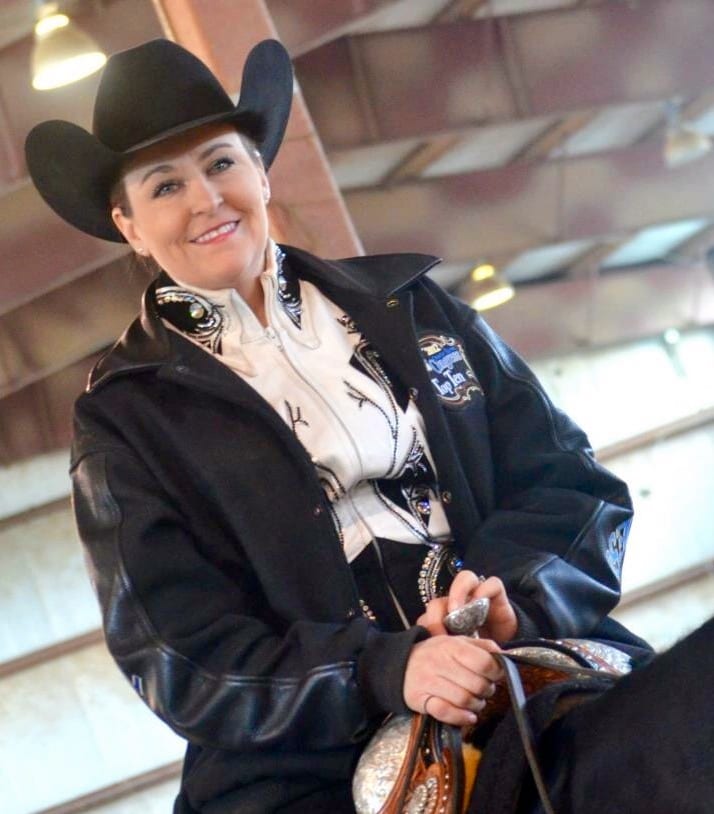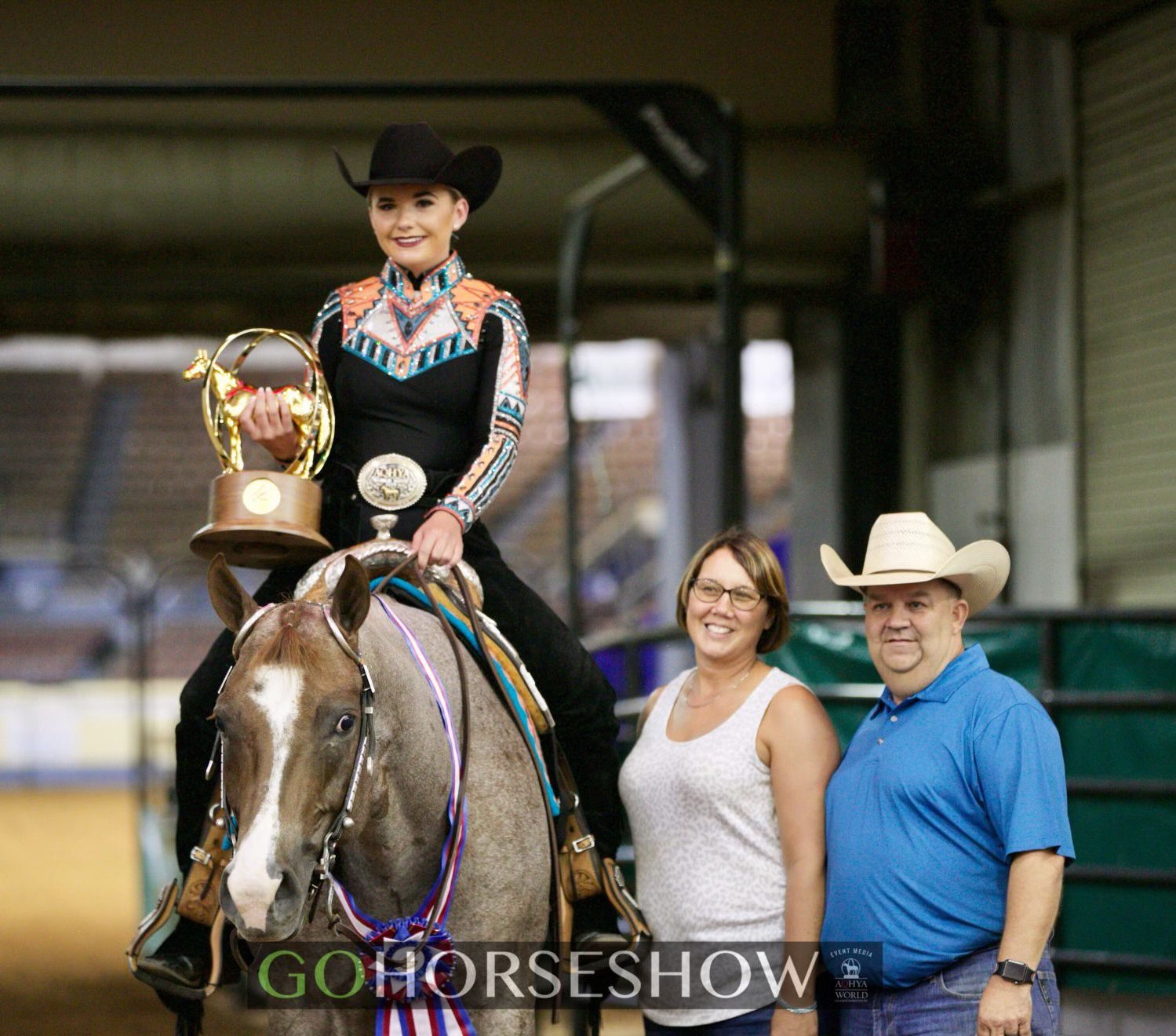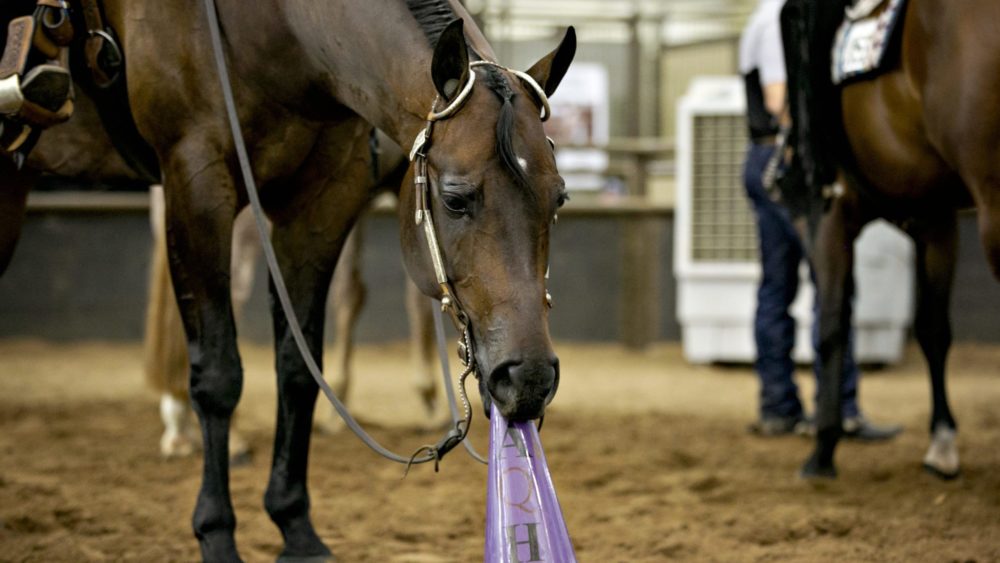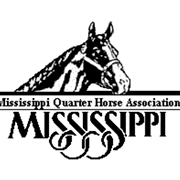A good horse trainer discovers what a horse excels at and follows that path. Trainers Judd Paul of IronGate Quarter Horses and Melissa Shetler of Circle M Training Center provided their professional insight into finding the perfect event or discipline for a horse.
“It’s a process of elimination,” Shetler said. “Owners come to me with, ‘This is what I want to do.’ I take that as a guide, not as a be-all-end-all. Then, I play around with the events. I try to find the events the horse is happiest doing and the best at.”
Movement Matters
If a horse can’t complete the movements necessary to compete in an event, it won’t excel in it. So, ensuring that your horse’s conformation and movement match its discipline is essential.
 “Our expertise is the trail, horsemanship, and western riding, so we find pleasure horses or good movers. We want quality movement,” Paul said. “They need a lift in their shoulders, self-carriage, and self-balance.”
“Our expertise is the trail, horsemanship, and western riding, so we find pleasure horses or good movers. We want quality movement,” Paul said. “They need a lift in their shoulders, self-carriage, and self-balance.”
When Paul looks at horses, he keeps his eye out for the ones that encompass all three traits. Without those characteristics, it’s hard for a horse to get over a pole or lighten its stride, which is necessary for the trail.
“If we see one that has all three, we ask to take it over a trail pole,” he said. “Nine out of ten times, it comes easy to the horse.”
But, both horse and rider will be left frustrated if the horse doesn’t have the conformation or movement for an event.
“If something’s constantly difficult or a struggle to work on, as far as an event or maneuver, that tells me the horse has a hard time doing it,” Shetler said. “Not that it won’t eventually do it, but it probably won’t do it as well as you want.”
Good Demeanor
To excel, the horse has to be happy doing its event. So, Shetler stressed looking for warning signs of irritation.
 “(One warning sign) is frustration on their part. When a horse starts to get nervous when you’re pushing them, or they’re unwilling to do something, it’s a sign that they aren’t capable or comfortable doing it,” she explained. “I give them a chance, and I certainly work at that event, but if I keep coming up against that obstacle, that tells me that this horse doesn’t want to do this.”
“(One warning sign) is frustration on their part. When a horse starts to get nervous when you’re pushing them, or they’re unwilling to do something, it’s a sign that they aren’t capable or comfortable doing it,” she explained. “I give them a chance, and I certainly work at that event, but if I keep coming up against that obstacle, that tells me that this horse doesn’t want to do this.”
You don’t want a stressed or unhappy horse, especially when demeanor counts in the show ring.
“If the horse turns pinny-eared after you start doing a particular discipline or event, that horse doesn’t like it,” Paul said. “Expression is everything in the trail. You want a good expression through their eyes and their ears. Very few of our horses are ever pinny-eared in a trail class, so they’re happy doing their job.”
Matching the Horse, Trainer, and Rider
One of the most critical aspects of success is the horse’s environment.
 “Make sure you’re with somebody who excels at that particular discipline (that the horse is good at),” Judd said. “Don’t be with a pleasure trainer and want to do the trail. Or don’t be with a trail trainer if you want to do the equitation or hunter under saddle. Make sure you’re comfortable with your trainer. You have to find the right combination to achieve your goals.”
“Make sure you’re with somebody who excels at that particular discipline (that the horse is good at),” Judd said. “Don’t be with a pleasure trainer and want to do the trail. Or don’t be with a trail trainer if you want to do the equitation or hunter under saddle. Make sure you’re comfortable with your trainer. You have to find the right combination to achieve your goals.”
The horse and rider also have to be a good match, whether sharing favorite events or ability.
“The ability of the rider has to match the ability of the horse,” Paul explained. “If you want to learn how to do the trail, don’t buy a green horse. You need a seasoned horse, and that goes for any discipline you want to do.”
Be Open-Minded
Sometimes, predictions about what horses will excel in specific disciplines aren’t always accurate.
“One horse stands out in my mind that we guessed wrong. It had a hard time bending its knee. It was a great pleasure horse, but it couldn’t bend its knee, and it didn’t have enough stride behind, so it was always hitting poles in the back,” Paul said. “So, we just taught showmanship and horsemanship; it just wasn’t a trail horse. It did the other disciplines, which was fine for that particular individual.”
 Shetler shared a similar experience, underscoring the importance of being flexible.
Shetler shared a similar experience, underscoring the importance of being flexible.
“I did have one come in years ago that was bred and broke out to be a pleasure horse. But, unfortunately, they had trouble in a different program, and the owners brought it here,” she said. “Between behavior problems and physical issues as far as doing the events, I took a year to ride him, take him to some shows, and find what the horse needed.”
At one show, when a different horse couldn’t go into the hunter under saddle, Shetler threw a hunt saddle on this horse. She won second place, getting his first points in the hunt seat. He went on to win numerous Top 10s and have a great hunt seat career.
“Just be open-minded,” she advised. “The problem we run into as trainers is, people get stuck in a box of, ‘I want to do this event.’ Great, if your horse is able. But, if not, you have to be willing to get a different horse or try a new event. Listen to your gut, listen to the horse. Trust the process.”









